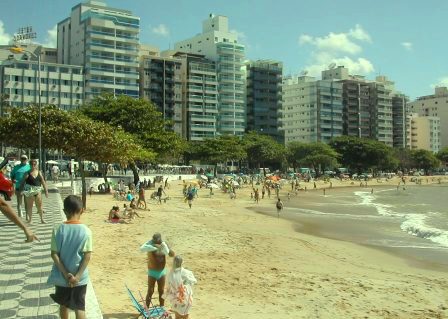
Friends of the Earth’s Jim Green was given the final words in this Guardian article about the Australian Nuclear Association and Westinghouse – a leading vendor of nuclear energy and domestic whitegoods. Yet, can we conclude, from the words he has chosen that opposition to modern nuclear energy has distilled down exclusively to cost? Among numerous omissions, the singular hazard of radiation, conflation of baseload electricity with bombs, and the worst reactor accident in decades which happened less than five years ago didn’t rate even a mention.
Let’s call this progress. Radiation is a well-understood, unexceptional hazard. Commercial nuclear power has actually been instrumental in disposing of weapons. In Japan, students, rice farmers, fishermen and milk producers are just getting on with it, with no thanks to the years of anti-nuclear pressure and opportunism, while coal replaces nuclear meet the region’s electricity demand.
But what of the cost? Well, five and a half billion dollars is the figure we are confronted with, with the intimation that this cost will, if not increase, then surely never fall. This is a lot of money, but is it a lot for at least six decades of substantial, reliable, climate-friendly electricity with, apparently, no other concerns worth mentioning? The IEA and OECD-NEA have this year concluded that it isn’t. Their analysis of 22 countries and hundreds of power plants concluded that appropriate market frameworks and financing result in competitive costs for nuclear power along with renewable sources typified by wind and solar PV.
Green certainly cites the latter as viable and affordable. What is persistently implied is that wind and solar, as low emissions generators, can be built much faster and inexpensively than nuclear reactors.
We can actually attach some simple numbers to this idea. Let’s look at rooftop solar first, which is still certainly going strong. The Energy Supply Association of Australia has provided current addition rate estimates, noting that the six month rolling average of monthly added capacity is now 56.7 megawatts (MW). If this rate can be sustained, then annual addition may total 680 MW (somewhat lower than the rate forecast by the Clean Energy Regulator). Based on Australian solar PV’s 15% capacity factor, an annual average of 894 000 megawatt hours (MWh) will be added to help displace daytime demand and fossil fueled generation – a “world leading” rate.
What about large-scale solar? AGL’s Nyngan and Broken Hill farms were brought online this year to provide 360 000 MWh per year. If we could build the same every year, then total annual solar addition might be kept at 1 254 000 MWh.
Generation numbers from added wind farm capacity are provided in the Clean Energy Council’s annual reports. The greatest ever single calendar year for wind addition was in 2013 (prior to the collapse of regulatory certainty) at 2 034 000 MWh. Let’s assume renewed industry confidence and ample suitable sites could once again support this rate in the future.

The original article reports that the executive from Westinghouse wants to provide “clean, reliable, affordable electricity for more people” and would “like to help Australia explore ways to create jobs and economic opportunity that are also good for the environment”. If this took the form of three new 1110 MW AP1000 reactors to comfortably replace the capacity of Hazelwood and Yallourn brown coal stations on the NEM with an oft-cited 15 year project timeframe, this could be annualised to 26 253 000 MWh / 15 = 1 750 000 MWh. So, even in a pessimistic timeframe and with a small initial number of reactors, by the first year of grid connection nuclear addition is comparable to Jim Green’s alternatives – and still distinctly modest by historical standards. Add all these addition rates together and we start to get a fairly respectable pace of decarbonisation.
Replacing coal has economic consequences which affect real people. Fortunately, three AP1000s would generate something like twenty-one thousand jobs in construction and operation. Ramped-up solar and wind build may not appreciably impact coal operations, if the last 15-odd years in Germany is any indication. Indeed, it is becoming painfully clear that variable renewable energy won’t be capable of scaling to the required magnitude on its own.
But what about this unacceptable cost that Australians would be asked to bear? Universally with nuclear opposition, an honest comparison is avoided, as is consistency. There is no doubt that wind is affordable at current levels of grid penetration, and solar has seen dramatic reductions in price as well. Both technologies offer cost competitive, incremental addition. But concentrating solar thermal has been recently studied for feasibility and abandoned as too expensive – and we most certainly do not see activists now campaigning against it on the basis of cost!
 The rhetoric around the “nuclear renaissance” is largely Green’s own. The number of active nuclear builds is currently the highest since 1990 – a figure conceded by the anti-nuclear World Nuclear Industry Status Report. Groups as diverse as the Australian Workers Union and TAFE recognise the various potential benefits to be gained. Opponents necessarily deny these stakeholders any validity just to maintain their anti-nuclear stance – how is that fair? When recognised as a climate-friendly, clean air form of power, as publicly done by the Canadian Asthma Society, surveyed Americans overwhelmingly support nuclear in the future energy mix, and most neighbours of existing plants have no qualms.
The rhetoric around the “nuclear renaissance” is largely Green’s own. The number of active nuclear builds is currently the highest since 1990 – a figure conceded by the anti-nuclear World Nuclear Industry Status Report. Groups as diverse as the Australian Workers Union and TAFE recognise the various potential benefits to be gained. Opponents necessarily deny these stakeholders any validity just to maintain their anti-nuclear stance – how is that fair? When recognised as a climate-friendly, clean air form of power, as publicly done by the Canadian Asthma Society, surveyed Americans overwhelmingly support nuclear in the future energy mix, and most neighbours of existing plants have no qualms.
The nascent Australian nuclear industry isn’t lobbying. It’s simply asking to safely, productively exist.
More on timescales: Population-levelised Addition Rates
Current Australian population: 23 887 530
Solar addition: 0.052 MWh/person/year
Wind addition: 0.085 MWh/person/year
Nuclear addition, average 15 year: 0.073 MWh/person/year
Germany highest wind energy addition year, 2011: 11 090 000 MWh
(Population, 2011: 81.8 million)
Peak rate: 0.136 MWh/person/year
France average nuclear addition, 1970-86: 0.28 MWh/person/year
Peak addition, 1985: 0.93 MWh/person/year
Sweden average nuclear addition, 1970-91: 0.44 MWh/person/year
South Korea peak nuclear addition, 2005: 0.33 MWh/person/year
(Hong, Bradshaw & Brook 2015)
Australian annual electricity consumption is nearly 250 000 000 MWh. Fuel switching from fossil fuels will demand future increase, as well as ultra-low emissions sources.

Comparison of data cited. France is included to illustrate what can be done, and includes roughly representative current wholesale power price range.
More on cost: price per kilowatt (kW) installed and LCOE price per MWh
Hornsdale 100 MW windfarm: $2500/kW
Australian 2020 wind estimated LCOE: $60-$120/MWh
Nyngan/Broken Hill 155 MW utility PV: $2840/kW
Australian 2020 PV estimated LCOE: $70-$190/MWh
Port Augusta 50 MW CST proposal: $11540/kW
Alinta base case LCOE: $201/MWh
Westinghouse AP1000 1110 MW net (at $5.5 billion): $4950/kW
Australian 2030 GW-nuclear estimated LCOE: $90-$180/MWh
These AETA 2013 Model estimates may be updated soon. Solar, wind and nuclear energy are all fundamentally different technologies. For details, see the primer.







